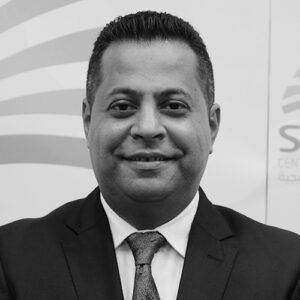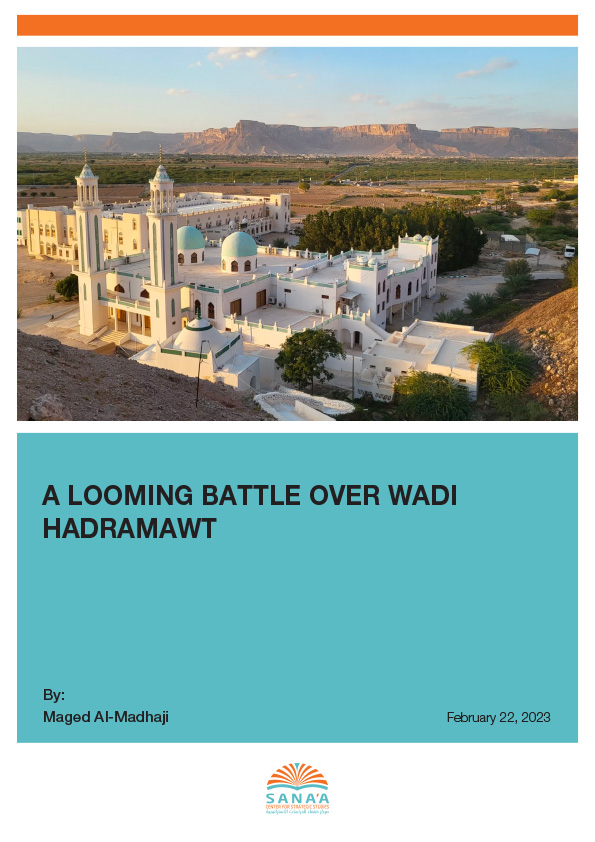As the fragile undeclared truce continues between the internationally recognized government and the Houthi movement in Yemen, another cycle of political and military tension is escalating in southern Yemen. In Wadi Hadramawt, polarization over the future of the Seyoun-based 1st Military Region threatens a new round of fighting between groups within Yemen’s anti-Houthi camp.
Tensions over Wadi Hadramawt stem from bitter divisions that Yemeni parties have been unable to overcome over the course of the war; in fact, the conflict has served to deepen preexisting rifts. A North-South divide continues to exist in many minds, which has led to demands among some southern groups, most prominently the Southern Transitional Council (STC), to roll back unification and restore the state of South Yemen based on pre-1990 borders.
The Struggle for the South
Major changes in Yemen over the past year saw the influence of the STC and other groups backed by the United Arab Emirates grow in areas nominally under the control of the internationally recognized government. The UAE-backed Giants Brigades pushed Houthi forces out of Shabwa governorate and parts of southern Marib in January 2022. The replacement of President Abdo Rabbu Mansour Hadi with an eight-man Presidential Leadership Council (PLC) in April further increased the clout of UAE-backed military commanders, including STC chief Aiderous al-Zubaidi. The STC’s political appetite to extend their control over all governorates that were formerly part of South Yemen also became more pronounced. After ejecting forces affiliated with the Islah party from Shabwa in September, the STC has turned its eyes to Hadramawt.
The looming confrontation over Wadi Hadramawt and Seyoun is, at its core, a fight over the last major stronghold for northern-based forces in areas that the STC seeks to bring under its influence. Most 1st Military Region personnel hail from northern Yemen. Soldiers’ families and other northerners, working in trade or the service sector, have also settled there since 2015, contributing to the city’s growth. While the overall commander of the 1st Military Region, Major General Saleh Mohammed Taimas, is from the southern governorate of Abyan, the region’s former chief of staff and de facto commander, Yahya Mohammed Abu Awja, hails from Amran governorate and is a prominent symbol of northern control denounced by the southern and local Hadrami actors. Abu Awja’s replacement as chief of staff with a Hadrami military commander, Amer bin Hatyan from the 2nd Military Region based in Mukalla in coastal Hadramawt, by Presidential Leadership Council head Rashad al-Alimi in December sought to ease tensions and pressure for further structural changes to forces in Wadi Hadramawt. Abu Awja has maintained his position as commander of the 135th Armored Brigade, the region’s strongest military unit. The STC remains unhappy with Abu Awja’s continued influence and discontent that his replacement is not a close ally. However, it has not taken an explicit stance against him because of his Hadrami identity. The group continues to agitate for further changes in Wadi Hadramawt. If it were to expand its influence into the strategic and oil-rich governorate, the STC would control the majority of Yemeni territory outside Houthi-held areas and nearly all of the former South Yemen, save for the easternmost governorate of Al-Mahra. Additionally, Hadramawt’s oil and gas resources would come under the group’s sway, granting it a dominant position in government decision-making.
The controversy over the 1st Military Region represents another challenge to the Islah party in what has been an undisputed sphere of influence for the group. In northern Hadramawt, Seyoun and the Al-Wadiah land port, Yemen’s only active border crossing with Saudi Arabia, are critical to Islah as extensions of its stronghold of Marib city. Seyoun also hosts one of the two active airports in government-held areas, the other being in Aden. Should Wadi Hadramawt fall into the hands of adversaries, Islah would be fully encircled in Marib, given that STC-aligned forces control Shabwa to the southeast and Houthi forces are positioned on frontlines west and south of Marib city. Islah’s sensitivity toward being isolated increased following the exit of its allies, President Hadi and former Vice President Ali Mohsen al-Ahmar, from the scene with the establishment of PLC, which greatly diminished the party’s influence within the government. Its loss of influence in Shabwa following the battles there in September has only further aggravated these fears.
Amid the struggle between the STC and Islah, the local Hadramawt Inclusive Conference (HIC) has seen a rise in political influence. A political bloc formed in 2017, the HIC comprises representatives of Hadrami tribes, politicians, academics, religious leaders, and activists. Its leader, tribal sheikh Amer bin Habrish al-Alayi, holds immense sway through the Hadramawt Tribal Alliance, which forms 30 percent of the HIC. The bloc is also represented in the internationally recognized government via its Secretary-General Tariq al-Akbari, who serves as Minister of Education, and Assistant Secretary-General Akram al-Amiri, who was appointed as a member of the Consultation and Reconciliation Commission that was formed following the establishment of the PLC.
The HIC and STC share a similar position on the need to replace 1st Military Region forces. This can be seen in the HIC’s demands that local Hadrami forces take over security responsibility in Wadi Hadramawt and other cities in the governorate. However, the HIC opposes the STC’s desire to monopolize southern representation and instead leans toward an independent Hadrami role that distances itself from STC’s vision for a reconstituted South Yemen. In other words, the HIC advocates for further autonomy for Hadramawt in any political future, whether in a federal system or a new southern entity.
Saudi and the UAE At Odds
Another inescapable factor influencing events in Wadi Hadramawt is a growing Saudi-Emirati rift, following a period of mutual understanding that gave birth to the PLC. Saudi Arabia views the situation in Wadi Hadramawt as a national security issue and thus seeks to prevent any expansion of UAE influence to the area, with which the kingdom shares a long border. Riyadh is currently seeking to protect its influence there by relying on its existing relationships with 1st Military Region forces, prominent tribal sheikhs in Hadramawt, and Islah. Another factor driving Saudi thinking is an understanding that a major shift in dynamics in eastern Yemen would raise serious concerns for the Omanis and could lead Muscat to escalate in Al-Mahra, where Oman retains local allies and has its own national security concerns. Saudi Arabia is also keen to maintain constructive relations with the sultanate given its active diplomatic role in negotiations between Riyadh and the Houthi movement.
Still, Saudi Arabia’s approach in Wadi Hadramawt remains outdated. This can be contrasted with the UAE, which is leveraging the popular appeal of the idea of “Hadramization” of 1st Military Region forces, recruiting second-tier tribal sheikhs to lead socio-political initiatives that express opposition to the presence of northern forces in the governorate (such as the Al-Habba tribal movement), using friendly media to influence the local populace, and highlighting issues such as the need to combat terrorism and smuggling. This dynamic approach has proven effective compared to Saudi efforts that generally fail to quickly adapt to changes on the ground.
The situation in Wadi Hadramawt is also fueling disagreement within the PLC and undermining efforts to diffuse tension between its members. The Saudi-Emirati rift has further exacerbated conflict within the body, weakening Rashad al-Alimi’s position and his ability to manage a divided PLC. The collective stand by PLC members against his unilateral appointments in Hadramawt proved this, although each member had his own reasons for opposition. This portends a bleak future for PLC, which was formed with the primary goal of minimizing divisions and cycles of violence that long existed between parties in the anti-Houthi camp under former President Hadi.
An Uncertain Future
Seyoun – known among locals as “The City of Peace” – is nestled in the heart of a valley surrounded by desolate rocky plains, a perfect reflection of the tranquil and friendly nature of the Hadrami identity. Over eight years of war and the sounds of guns and missiles that echoed throughout Yemen, this city has remained a place far from the violence. Yet it’s unlikely Seyoun will be spared further if the conflict over the 1st Military Region continues to escalate.
This analysis is part of a series of publications produced by the Sana’a Center and funded by the government of the Kingdom of The Netherlands. The series explores issues within economic, political and environmental themes, aiming to inform discussion and policymaking related to Yemen that foster sustainable peace. Views expressed within should not be construed as representing the Sana’a Center or the Dutch government.

 اقرأ المحتوى باللغة العربية
اقرأ المحتوى باللغة العربية
